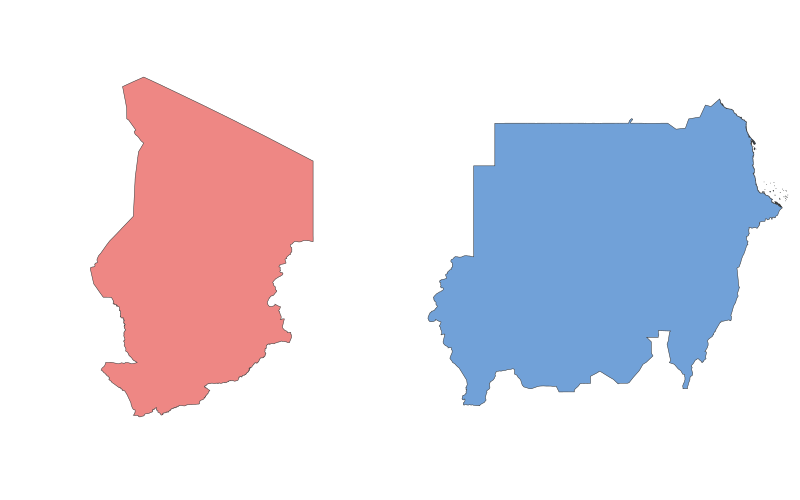Tschad vs. Sudan: Ein geografischer Vergleich

Vergleichstabelle
| Kategorie | Tschad | Sudan |
|---|---|---|
| Lage | Binnenland in Zentralafrika, grenzt an Libyen, Sudan, Niger, Nigeria, Kamerun, Zentralafrikanische Republik | Nordostafrika, grenzt an Ägypten, Eritrea, Äthiopien, Südsudan, Tschad, Libyen, Zentralafrikanische Republik |
| Größe | 1.284.000 km² | 1.886.068 km² (vor der Abspaltung des Südsudans 2011) |
| Klima | Wüstenklima im Norden, tropisch im Süden | Wüstenklima im Norden, Savannen- und Regenwaldklima im Süden |
| Naturressourcen | Erdöl, Uran, Gold, Kalkstein | Erdöl, Gold, Silber, Chrom, Eisen, Kupfer |
| Urbanisierung | Hauptstadt N'Djamena, geringe Urbanisierungsrate | Hauptstadt Khartum, höhere Urbanisierungsrate |
| Verkehr | Begrenztes Straßennetz, wenige asphaltierte Straßen | Besser ausgebautes Straßennetz, Eisenbahnverbindungen |
Beschreibung der Länder
Tschad
Tschad, ein Binnenstaat in Zentralafrika, ist bekannt für seine vielfältigen Landschaften, die von der Sahara im Norden bis zu fruchtbaren Savannen im Süden reichen. Das Land hat eine reiche Geschichte, die bis zu den alten Königreichen wie Kanem-Bornu zurückreicht. Die Kultur ist von über 200 ethnischen Gruppen geprägt, wobei Arabisch und Französisch die Amtssprachen sind. Die Wirtschaft Tschads stützt sich stark auf die Erdölförderung, obwohl die Mehrheit der Bevölkerung von der Landwirtschaft lebt. Politische Instabilität und Konflikte haben die Entwicklung des Landes jedoch behindert.
Sudan
Der Sudan, das flächenmäßig drittgrößte Land Afrikas (vor der Abspaltung des Südsudans), liegt im Nordosten des Kontinents. Seine Geschichte reicht bis zu den antiken Zivilisationen Nubiens und des Königreichs Kusch zurück. Der Sudan ist ein kultureller Schmelztiegel mit arabischen und afrikanischen Einflüssen, wobei Arabisch die dominierende Sprache ist. Die Wirtschaft des Sudans war lange Zeit von der Erdölproduktion abhängig, hat sich jedoch nach der Abspaltung des Südsudans diversifiziert. Der Sudan steht vor Herausforderungen wie politischer Instabilität und wirtschaftlichen Schwierigkeiten, hat aber auch Potenzial in Landwirtschaft und Bergbau.